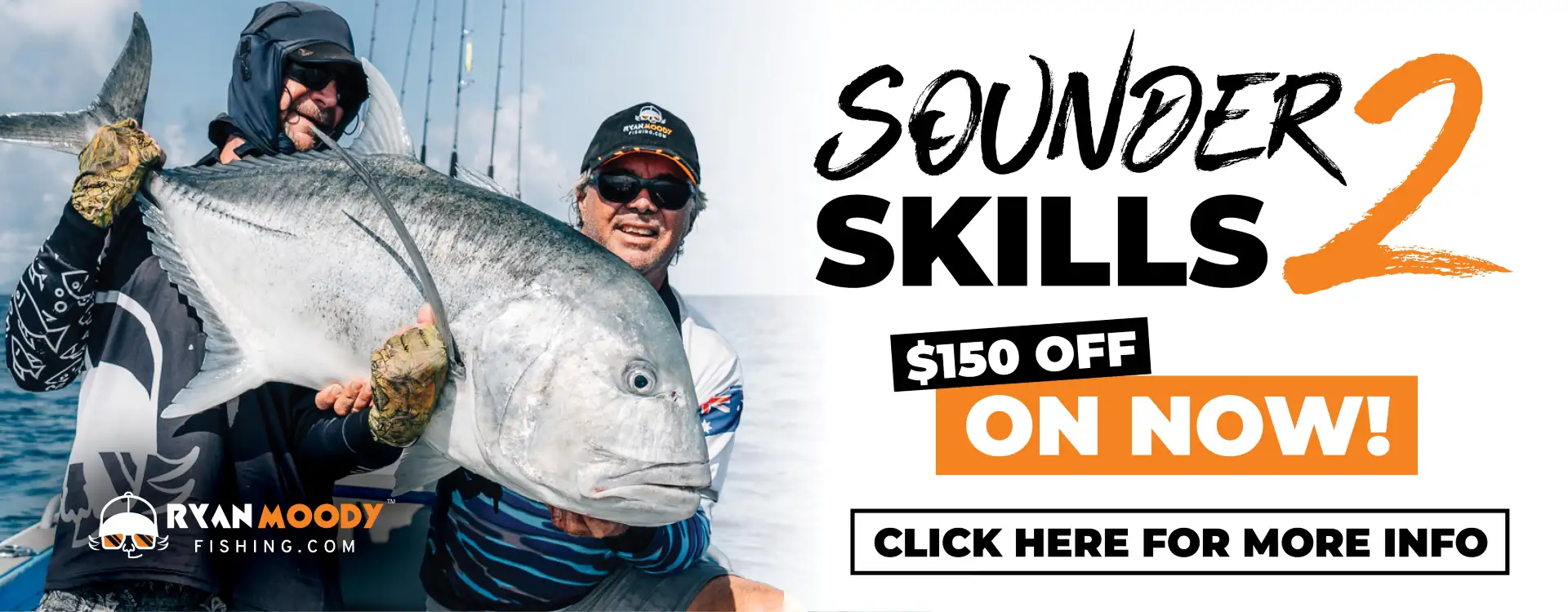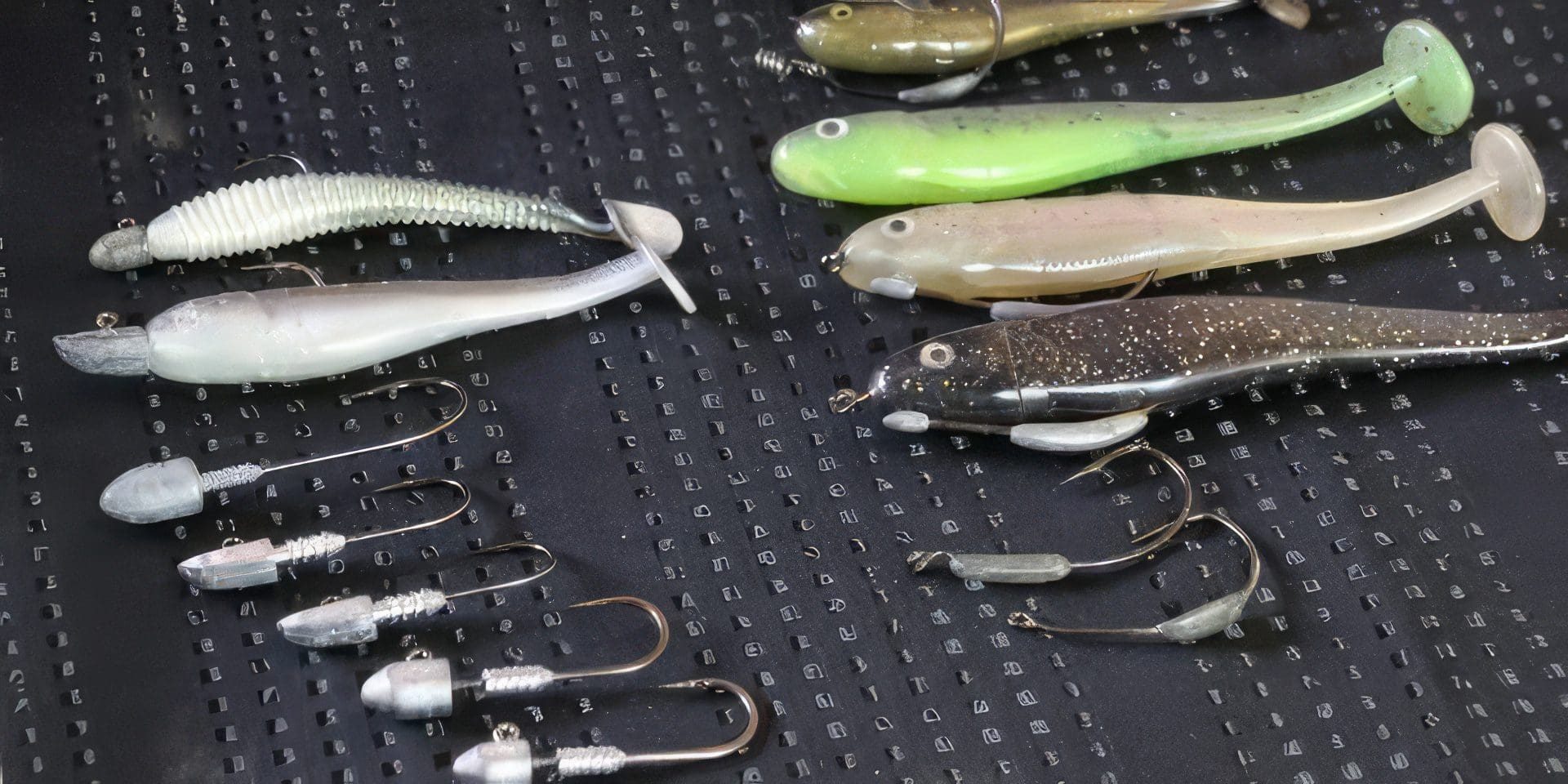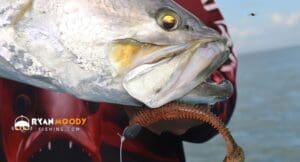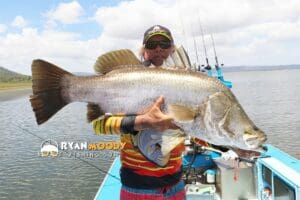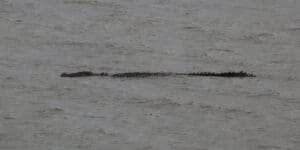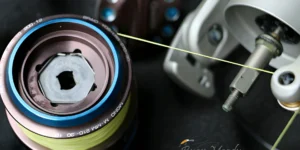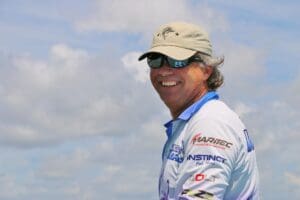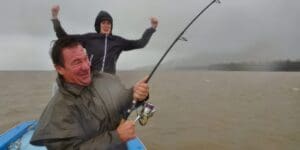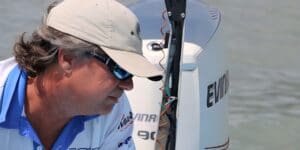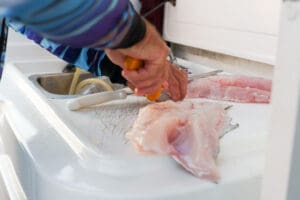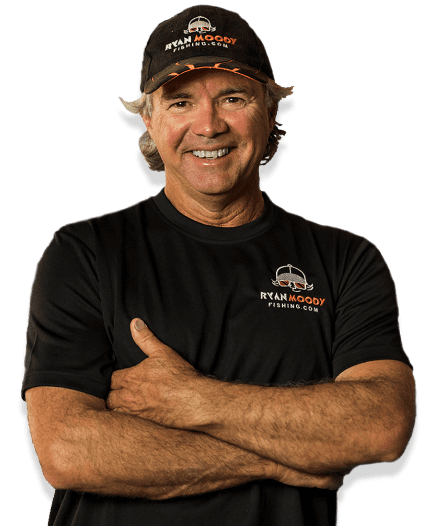Fishing with jig heads and soft plastics is an extremely effective way to catch big fish consistently.
I have been fishing with jig heads for many years now, and given the vast selection at the tackle shop, it can be a bit daunting knowing what to use.
Using them correctly can result in fish catches like this…
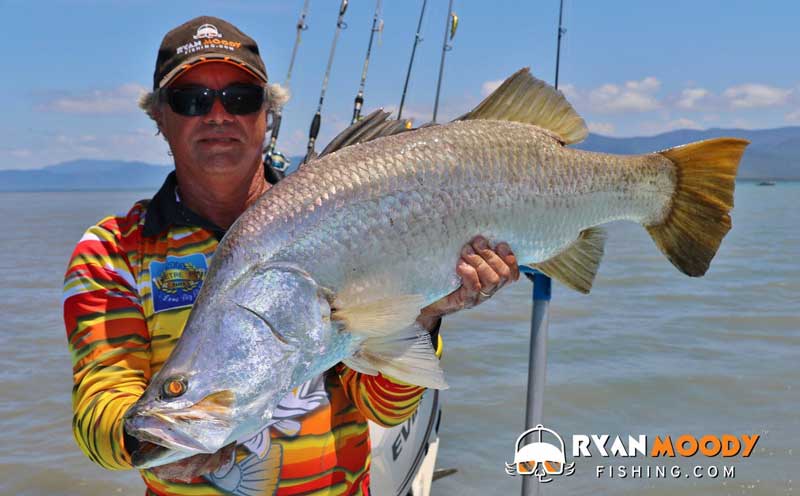
To begin, there are two main types of jig heads and both have different applications.
1. Fishing with jig heads – belly weighted.
Belly weighted jig heads are best used in shallow water.
The weight is on the shank of the hook and serves as a keel to keep the plastic upright.
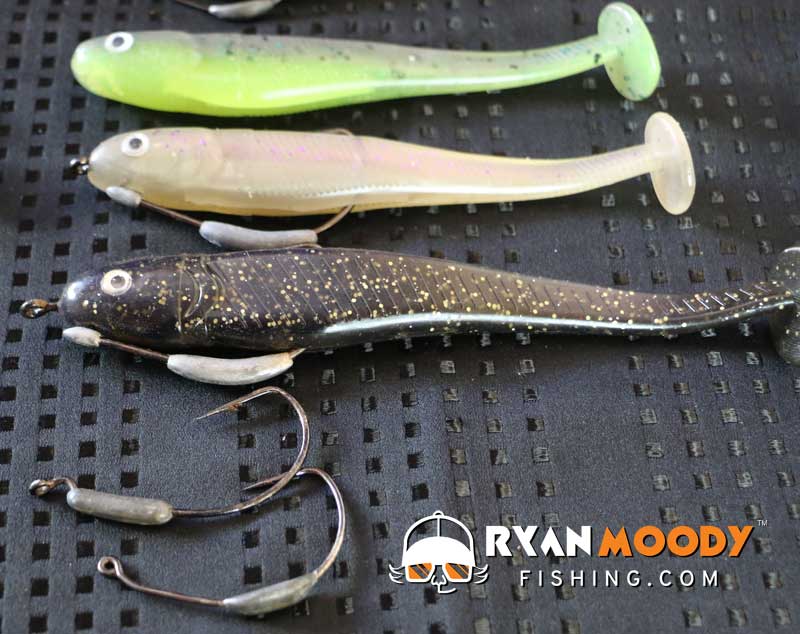
Typically the hook sits inside the soft plastic lure, so they’re ideal for weeds and heavily timbered areas.
Some have the weight closer to the head which makes them sink faster and is more ideal for fish hugging the bottom.
Mid shank weights flutter down more slowly and can be kept in striking distance of mid-water fish longer.
So keep an eye on your sounder when fishing with jig heads!
2. Fishing with jig heads – head weighted
Head weighted jig heads are for deeper water with the tow point on the top.
They have a protruding hook and as such, a great hook up rate – but the trade off is they will snag.
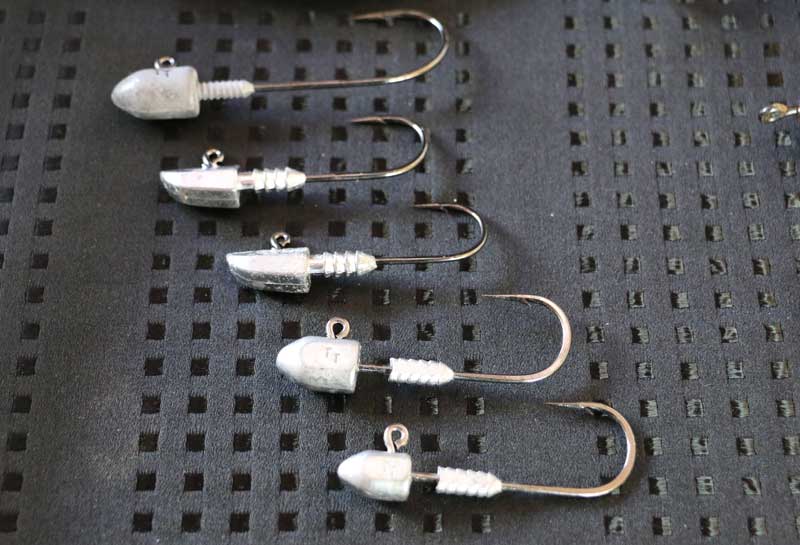
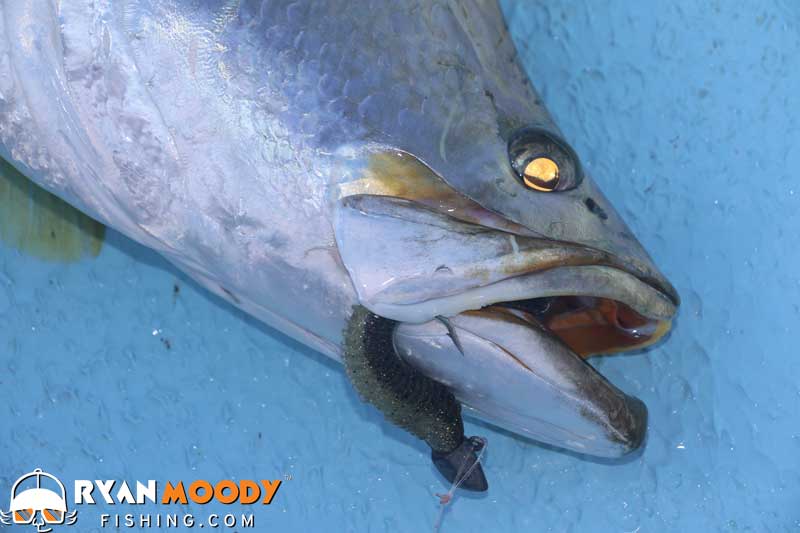
They are best in rubble and deep holes rather than fish aggregating tight on structure (due to the snagging risk)
The size of the jig head depends on the tidal run. I typically flick up current and jig slowly through the school.
3. Choosing the right size.
Choose the right jig head for the size of your soft plastic by holding it against the lure.
We demonstrate all three tips on fishing with jig heads in the video below.
For the heads up on how to find big barra aggregations, check out our FREE barra strategies workshop.
It will show you where you’ve been going wrong, the EXACT process I use to find barra aggregations and how you can get my complete road map to find and catch big barra consistently.



